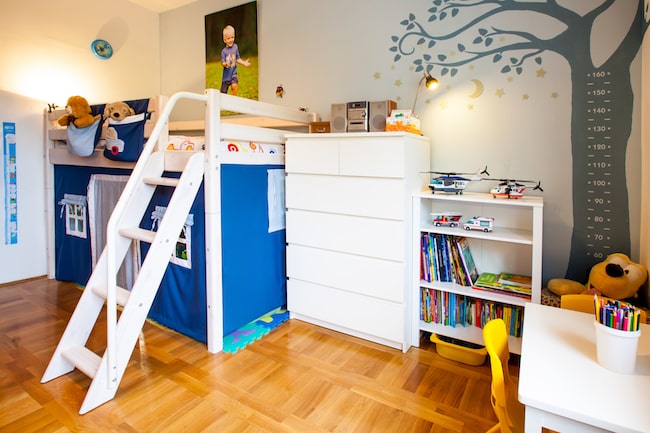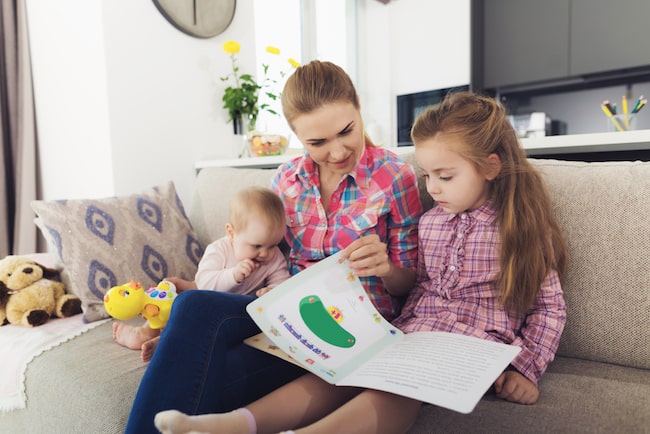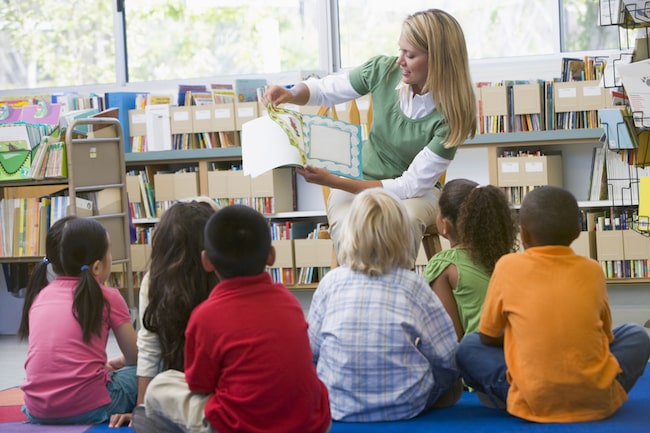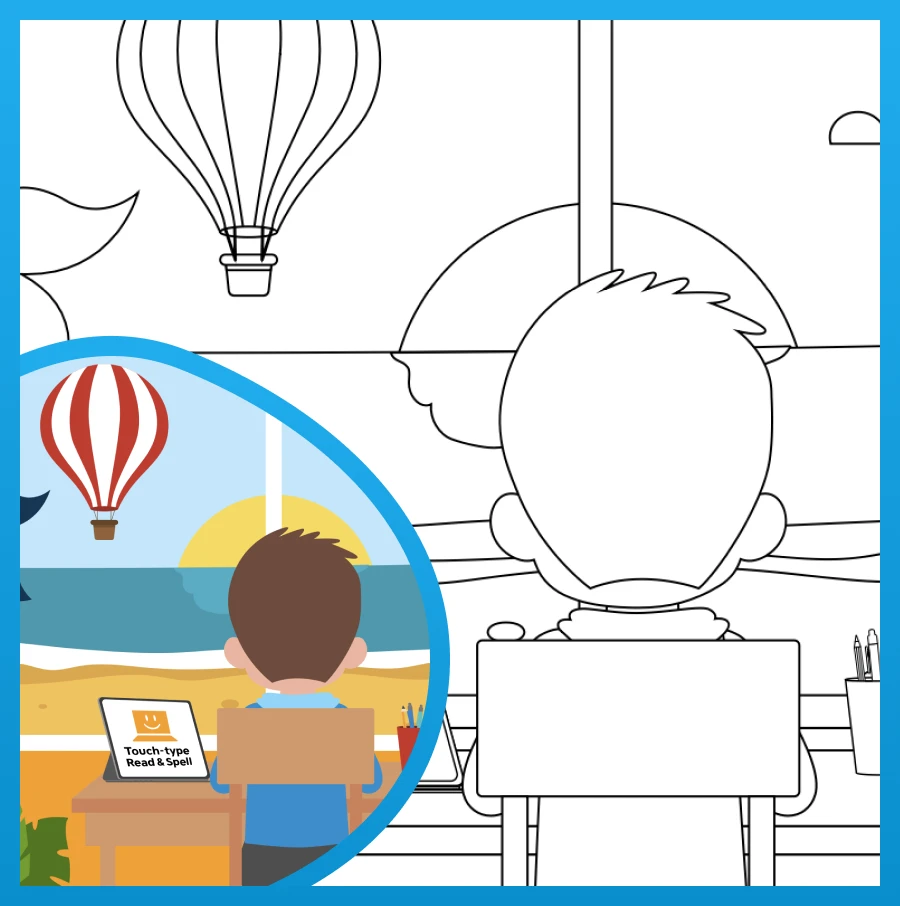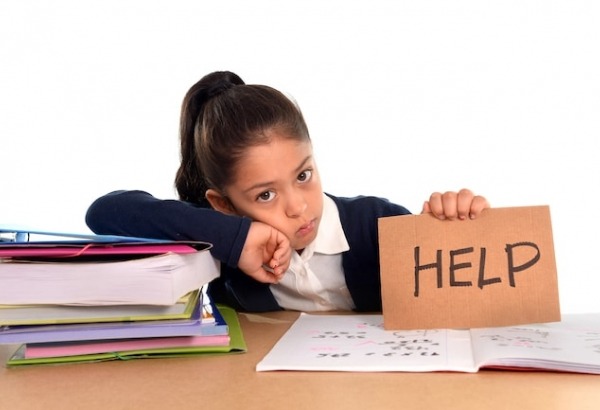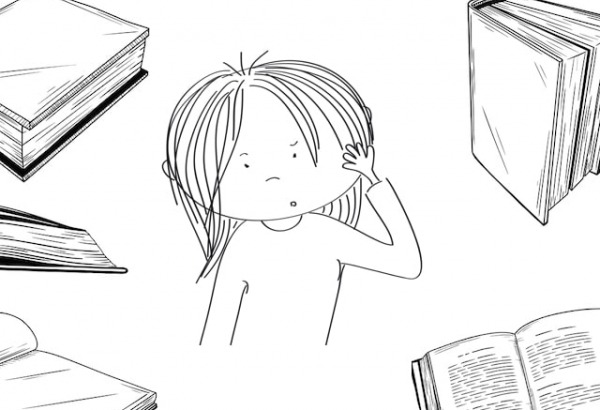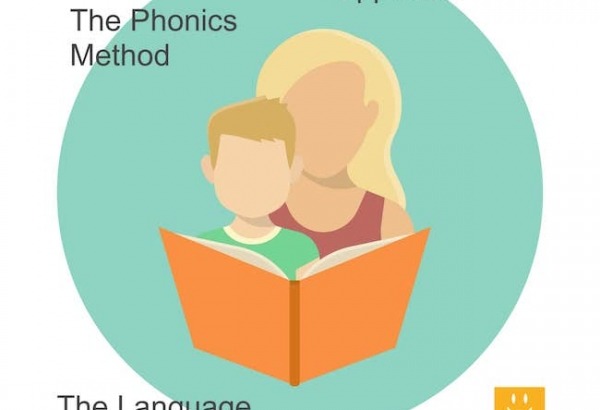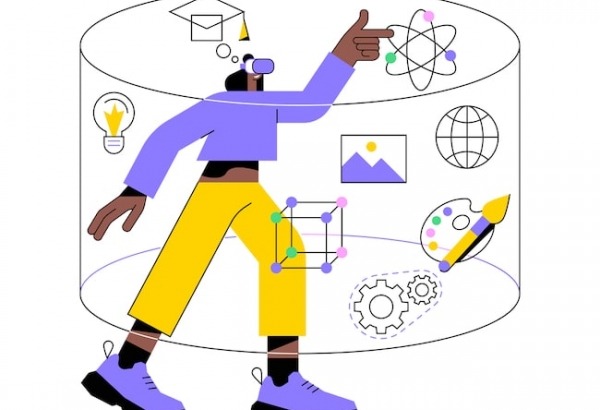6 Early literacy skills
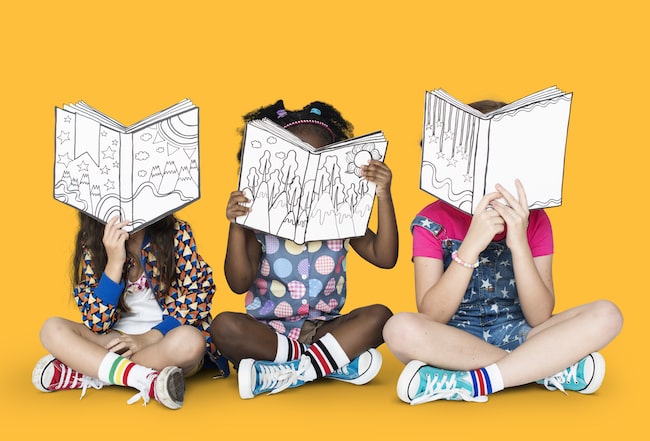
While reading and writing aren’t typically taught until after preschool, children can begin developing the early literacy skills they need to become strong readers from a very young age. Early literacy skills are actually pre-literacy skills and include wanting to look at books, following narratives, recognizing print, learning vocabulary and identifying letters and sounds.
Parents who foster a love of reading early on give their children the foundation they need to build strong literacy skills, which are crucial for success across the primary and elementary school curriculum.
Additionally, working to achieve pre-literacy milestones can help parents identify the first signs of any learning difficulties which may be present, such as dyslexia, so children can receive the extra support they need when they first start to read and write.
How children learn language
As soon as they are born (and even before they leave the womb) babies are paying attention to language. Their first challenge is to learn to recognize the sounds of their native tongue. They do this from within the uterus by listening to the language(s) spoken by their mother and other people around her.
Infants may be born with fuzzy vision, but in healthy babies hearing is fully developed. They use their ears to take in all of the rhythms, patterns and language to which they are exposed. When a baby coos and babbles in infancy, he or she is practicing the most common sounds of language, in preparation for when his vocal cords will be developed enough to utter those precious first words.
However, even before they have the skills needed to articulate spoken language, babies as young as 6 months can learn to recognize words. Later on at 8-9 months they may even be able to produce some vocally and certainly to recognize and use baby signs. That's why it’s never too soon to start expanding your child’s vocabulary!
6 Ways to help children develop early literacy skills
-
Expand their vocabulary
Developing a child’s vocabulary is crucial because he or she will find it much easier to read and write words that are already known. Early reading requires decoding, or moving slowly from letter (and attached sound) to letter. If the parts add up to something that sounds familiar, the whole process is a lot more fun.
Parents can help children learn words by teaching them how to describe the world around them. Books are an excellent way to introduce vocabulary that may not be in the child’s immediate environment, as is simply talking to children so they learn to recognize common words and what they stand for.
Sure, it is possible for children to pick up on words passively, but you can speed the process along by addressing a child directly (even a baby under the age of one) as it helps to draw their attention to the new word, which encourages learning and acquisition.
Keep in mind that many children’s books from your local library, especially Dr. Seuss books, use a particular set of vocabulary words repeated over and over again. These words come from the Dolch list and are among the most frequent words in the English language.
Mastering this vocabulary can make life much easier for children who are learning to read as it gives them a familiarity with most of the words on any given page. This allows them to concentrate their cognitive resources on the new vocabulary they encounter in a text.
-
Foster a love of books
It is hard to learn to read, but it’s a whole lot harder if it is forced upon you. Introducing children to books early on, so they associate them with positive emotions and are interested in them, is key. You want your child to be curious about print and motivated to learn to read.
Having plenty of books in your home library is a good way to get the ball rolling. You can read to newborns, infants and toddlers. The earlier you start introducing books and making a routine of reading, the better.

Children’s books often include bright colors, pop-ups and other tactile learning tools, so you can stimulate the development of multiple skills at a time. Reading with a baby is also a great opportunity to work on vocabulary.
Toddlers may enjoy going to the library, looking through books, reading them together with their parents and choosing their favorites to take home. If you can get a toddler excited about reading, they are well on their way!
-
Show them plenty of print
There’s a lot to look at and see when you are new to this world. Parents can help early literacy skills along by ensuring there’s plenty of print in their baby’s field of vision. Looking at books, words on cereal boxes, posters, signs, even clothing tags and pointing them out, encourages children to pay attention to print.
As they grow older, they may begin to reach for and interact with their parents’ electronic devices, such as mobile phones, tablets and computers. There is plenty of print to be found in gadgets, especially on their keyboards!
-
Teach the ABC's
When children are exposed to enough print, at some point they will begin to identify common patterns, such as the letters of the alphabet. You can introduce a child to the letters in his name as an initial foray into breaking a word into its parts.
Additionally, children learn letters by looking at shapes, playing with puzzles, talking about the different forms, and of course, studying the pages of the books their parents read to them.
Reading alphabet books, singing the alphabet song and even letting toddlers play with keyboards will ensure children get plenty of practice identifying letters to prepare them for writing and decoding later on.

-
Play with sounds
Adults know that letters stand for sounds but consider the situation for children. They can use and process spoken language, which means they instinctively know the sounds it consists of, but that doesn’t mean they know how to split the phonemes up along the arbitrary lines our spelling rules have assigned them.
To learn to read, you need to be able to map sounds to letters, so you can sound out your first words. Phonics can be especially tricky for a language like English in which different letters can stand for the same sound.
Singing songs, such as Old MacDonald Had a Farm, is great for working on sound recognition, think (Ee-I-ee-I-oo), as are children’s books with exaggerated animal sounds and other silly content that may not make much sense to the adult eye.
-
Present narratives
Storytime at your local library may consist of someone reading to a group of toddlers. You can see the children listening, some of them quite attentively, and making sense of the story as they look at the pictures and process the language. If the reader stops to ask questions and comment on the books, they can perform a sort of comprehension check to be confident the children are following along.
Recognizing a narrative and being able to produce one by talking about one’s day and/or organizing steps into a logical order, assists children when it comes time for them to learn to read and write.
Parents might encourage children to talk about what they’ve done during the day or narrate activities as they’re happening.
The key is making sure they get plenty of practice telling and listening to stories of all shapes, kinds and sizes.
Helping young readers
Not all children learn to read at exactly the same age or pace and parents can certainly benefit from knowing the steps young readers will go through on their way to literacy.
But what if your child is struggling with some of the pre-literacy milestones, such as letter recognition, and is showing disinterest when it comes to books?
It may be there is a delay due to sensory impairment or a child could be struggling with learning difficulties, which can range from mild to severe.
Luckily there are plenty of steps parents and educators can take to ensure each child reaches his or her full potential when it comes to literacy skills.
Learn more about common reading problems, reluctant readers, and how to help children develop reading fluency.

Multi-sensory learning and technology
As older children learn to read and write, it can be helpful to introduce a multi-sensory learning course that combines audio, visual and tactile learning, fosters literacy skills development and introduces keyboarding skills at the same time.
Even at the ages of 7 and 8, children can learn to touch-type which helps them with letter and word recognition, reading, writing and spelling.
For learners who struggle with reading
TTRS is a phonics-based touch-typing program that strengthens decoding and sight reading skills for children and adults who struggle with reading.
Chris Freeman

close
Can an Orton-Gillingham approach to literacy help your child?
Take a short quiz to find out!
TTRS has a solution for you
An award-winning, multi-sensory course that teaches typing, reading and spelling

How does TTRS work?
Developed in line with language and education research
Teaches typing using a multi-sensory approach
The course is modular in design and easy to navigate
Includes school and personal interest subjects
Positive feedback and positive reinforcement
Reporting features help you monitor usage and progress

